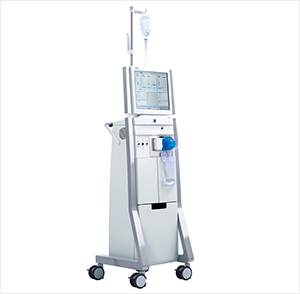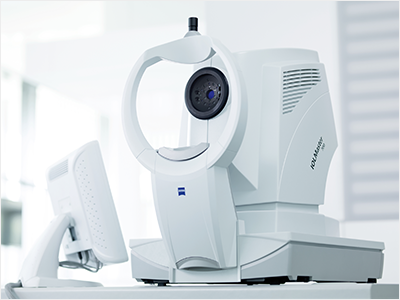Cataract Clinic
ULTRA MODERN CATARACT TREATMENT FACILITIES AT ANIL EYE HOSPITAL
CLEAR VISION Cataract services - Excellence in Cataract Management
This basic of eye problems is treated with the most advanced of techniques which have been sharpened by years of experience. This coupled with the almost obsessive attention to sterility and pleasant, trained staff make the experience of cataract surgery a very comfortable one. This is possible due to
OPTIKON PULSAR SQUARE PHACO MACHINE State of the art technology for sutureless cataract surgery by phacoemulsification
CARL ZEISS LUMERA-i MICROSCOPE-THE LATEST GENERATION OPERATING MICROSOPE
Ziess Visalis 500
The top of the line and the world′s most advanced Zeiss microscope (1st in Thane district) for unparalleled quality of vision and stereo coaxial illumination during cataract and posterior segment surgeries
COMPLETELY MODULAR OPERATION THEATRE WITH STATE OF THE ART HEPA FILTER WITH LAMINAR AIR FLOW & seamless epoxy flooring to minimise infection
Live surgical display of cataract surgeries to the relatives in the waiting hall.
Premium services like toric & multifocal foldable intraocular lenses
No injection, no stitch, no pad surgery.
What is the lens?
What are cataracts?
What are the symptoms of cataracts?
What are the different types of cataract?
How is cataract treated?
How is cataract surgery performed?
Types Of Intraocular Lenses (IOL)
Ultra Modern Cataract Facilities at Anil Eye Hospital
What is the lens?
The lens is the part of the eye that helps focus light on the retina. The retina is the eye's light-sensitive layer that sends visual signals to the brain. In a normal eye, light passes through the lens and gets focused on the retina. To help produce a sharp image, the lens must remain clear.
What are cataracts?
A cataract is a clouding of the eye's lens that hampers light passing through to the retina causing blurred vision. People who suffer from cataracts usually describe the condition as being similar to looking through mist. The most common cause of cataract is due to ageing. In the early stages, stronger lighting and eyeglasses may partially improve vision. At a certain point, however, surgery becomes necessary to improve vision. Today, cataract surgery is safe and very effective.
What are the symptoms of cataracts?
Gradual onset of blurred vision causing difficulty in reading or driving, watching television or any other routine activity
Bothersome glare, halos around lights, or even double vision.
Frequent changes in eyeglass prescriptions.
What are the different types of cataract?
Age-related cataract: Most cataracts are related to ageing.
Congenital cataract: Detected at birth
Secondary cataract: Due to recurrent eye inflammation or drug induced
Traumatic cataract: Due to an eye injury
How is cataract treated?
For an early cataract, vision may improve by using different eyeglasses. However, surgery is the only effective treatment & is one of the safest procedures. This treatment involves removing the cloudy lens and replacing it with an Intraocular lens.
How is cataract surgery performed?
Cataract extraction is performed by an advanced technique called Phacoemulsification. It is also known as micro-incision cataract surgery. This device emits ultrasound waves that soften and break up the cloudy center of the lens so it can be removed by suction. Most cataract surgery today is done by phaco.
Today, the “no-injection, no-stitch, no pad” technique is followed as surgery is done under topical anesthesia.
Types of Intraocular Lenses (IOl)
IOLMaster-700
Once the Cataract is removed, a permanent, artificial lens, called an Intraocular lens or IOL is implanted. There are two types of IOL′s available; non-foldable and foldable. These are basically monofocal lenses designed to give enhanced distance corrected vision but the patient still has to use glasses for reading.
Non-foldable Lenses (IOL) : Are made of a hard plastic material, are bigger in size & bigger incisions need to be made to insert them.
Foldable Lenses (IOL) :
Advantages of Foldable IOL :
Foldable IOLs are made up of soft Acrylic material.
Need very small incision for insertion of Lens in the eye usually it is 2.8mm
Does not require stitches
Very short healing time upto 4-5 days only
Chance of infection minimal.
Patients who undergo cataract surgery now also have options for ′upgrades′ for intraocular lenses that have never been available in the past.
Multifocal Lenses (IOL) : Have revolutionized existing state-of-the-art cataract surgery. Multifocal IOLs helps to achieve the ultimate goal of independence from glasses.
A multifocal intraocular lens has both distance and near focal points hence reduces our dependence on reading glasses. 90% of patients who get these lenses do not need glasses for routine activity.
TORIC IOL′S : These IOL′s are incorporated with cylindrical powers so as to correct astigmatism & reduce the patient′s dependence on cylindrical glasses for distance.
MULTIFOCAL TORIC IOL′S :These IOL′s correct both high astigmatism & also near vision correction, hence giving independence from glasses.







